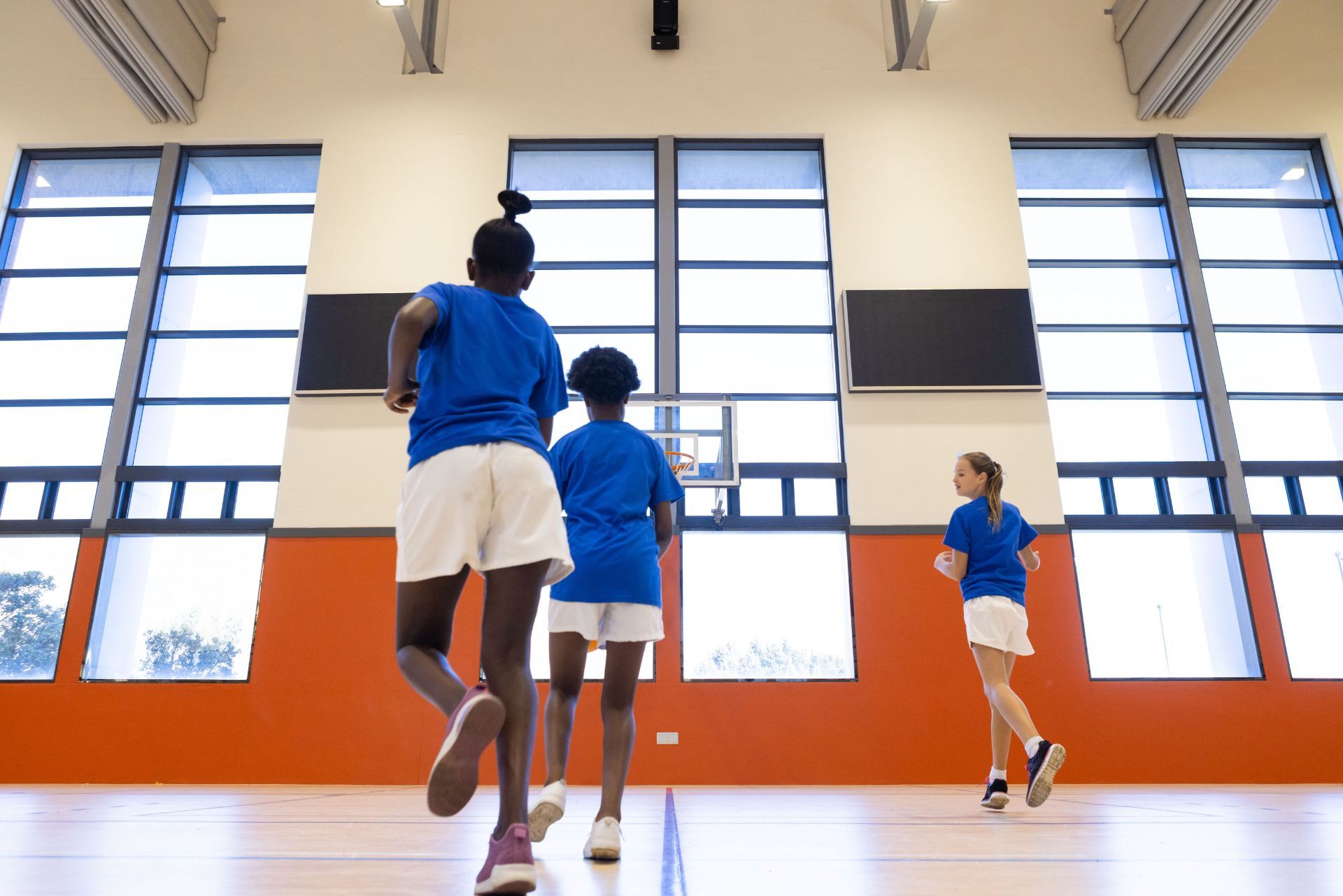Top 3 Recommended Policies

Sports facilities, from community gyms to professional stadiums, represent significant investments and hubs of activity that come with unique risks. Protecting these venues through comprehensive insurance is crucial for owners, operators, and stakeholders. With the global sports insurance market projected to reach a staggering $600 billion by 2025, understanding the nuances of sports facility insurance has never been more important. This article explores the essentials of sports facility insurance, its importance, coverage options, and emerging trends shaping the industry today.
Why Sports Facility Insurance Is Essential
Sports facilities are exposed to a wide array of risks, including property damage, liability claims, and injuries to athletes and visitors. Given the dynamic nature of sports environments, where physical activity is constant, the potential for accidents is high. For example, in the United States alone, approximately 3.2 million sports-related injuries occur annually among children and adolescents, underscoring the critical need for adequate protection.
Insurance helps mitigate financial losses arising from these risks, ensuring that facilities can continue operating smoothly even after unforeseen events. Without proper coverage, a single injury or property claim could lead to substantial financial strain or even closure. Additionally, many sports organizations and leagues require facilities to maintain insurance as a condition of participation or hosting events.
With the sports insurance market expanding rapidly, as highlighted by Reinsurance News, facility owners have access to a growing range of specialized insurance products tailored to meet their unique needs. These products can include coverage for equipment breakdown, event cancellation, and even cyber liability, which is becoming increasingly relevant as facilities adopt technology for ticketing and management.
Moreover, the complexity of sports facility operations means that insurance policies must be carefully crafted to address specific activities and services offered. For instance, a facility that hosts both recreational leagues and professional events may require different coverage levels due to the varying degrees of risk associated with each. Additionally, facilities that offer amenities such as swimming pools, climbing walls, or fitness classes face unique challenges and liabilities, making it essential to work with insurance professionals who understand the intricacies of the sports industry. This tailored approach not only protects the facility but also enhances its reputation, reassuring athletes and patrons that their safety is a top priority.

Key Coverage Areas for Sports Facilities
Sports facility insurance typically encompasses several core coverage areas designed to address the specific risks faced by these venues. Understanding these components helps facility managers choose policies that provide comprehensive protection.
Property Insurance
This coverage protects the physical structure of the facility, including buildings, equipment, and installed systems, against damage from fire, storms, vandalism, or other covered perils. Given the high value of sports infrastructure, property insurance is a fundamental component of any policy. Facilities often house expensive equipment such as gymnastic apparatus, swimming pools, and high-tech scoreboards, which can be costly to replace. Moreover, the potential for damage extends beyond just the physical structure; it also includes the risk of business interruption due to repairs, which can further impact the facility's revenue stream.
General Liability Insurance
General liability insurance covers claims arising from injuries or property damage suffered by third parties on the premises. For sports facilities, this is particularly important due to the high volume of visitors and the inherent risks of physical activity. It protects against lawsuits and medical expenses related to accidents that occur within the facility. Additionally, it can cover incidents that may occur during events, such as a spectator slipping and falling in the bleachers or an athlete colliding with a spectator. This broad coverage is essential for safeguarding the facility's reputation and financial stability, especially in a litigious society where claims can arise unexpectedly.
Participant Accident Insurance
Many facilities also offer or require participant accident insurance, which covers medical costs and sometimes lost wages for athletes injured while using the facility. A 2023 study found that 95% of institutions pay for injuries, with 22% covering general medical care and 34% covering prescriptions, highlighting the financial impact of sports-related injuries on organizations. The average annual insurance premium for such coverage was reported to be around $118,000, reflecting the significant investment in athlete protection. This type of insurance not only provides peace of mind for athletes and their families but also encourages participation by ensuring that athletes are supported in the event of an injury, thus fostering a safer sporting environment.
Business Interruption Insurance
In the event of a covered loss that forces a facility to close temporarily—such as a fire or natural disaster—business interruption insurance helps cover lost income and ongoing expenses. This ensures that facilities can recover financially while repairs or rebuilding take place. The coverage can also extend to loss of revenue from events that had to be canceled or postponed, which is crucial for facilities that rely heavily on ticket sales and concessions. Moreover, having this insurance can facilitate quicker recovery and help maintain staff salaries, ensuring that the facility can resume operations smoothly once the crisis is resolved. The importance of this coverage cannot be overstated, especially in an industry where downtime can lead to significant financial strain and loss of community engagement.
Emerging Trends in Sports Facility Insurance
The sports insurance sector is evolving rapidly, driven by technological advances and changing market dynamics. Insurers are increasingly leveraging artificial intelligence (AI), machine learning, and data analytics to refine risk assessments and tailor policies more precisely to individual facilities’ needs.
According to insights from FinancialfocusHub.com, these technologies enable insurers to analyze vast amounts of data, from injury patterns to facility usage, improving pricing accuracy and customer experience. This shift benefits facility owners by offering more customized coverage options and potentially lower premiums.
Another notable development is Zurich Insurance Group’s launch in May 2024 of a suite of insurance solutions specifically designed for emerging sports markets. These products address unique regional needs and regulatory environments, reflecting the increasing globalization and diversification of sports facilities worldwide. This move, reported by Business Research Insights, signals a growing recognition of the varied challenges faced by sports venues across different geographies.
In addition to these technological advancements, the rise of e-sports has introduced a new dimension to sports facility insurance. As competitive gaming continues to gain popularity, insurance providers are beginning to develop policies that cater specifically to e-sports arenas. These venues often face unique risks, such as cyber threats and the need for specialized equipment coverage. Insurers are now tasked with understanding the nuances of this rapidly growing sector, which requires a fresh approach to risk management and policy formulation.
Moreover, the ongoing focus on sustainability within the sports industry is prompting insurers to consider environmental risks more seriously. Facilities that implement green initiatives or are located in areas prone to climate-related events may find that their insurance needs differ significantly from traditional sports venues. Insurers are increasingly incorporating sustainability metrics into their underwriting processes, offering incentives for facilities that adopt eco-friendly practices. This trend not only helps mitigate risks associated with environmental factors but also aligns with the broader movement towards responsible and sustainable business operations in sports.
Factors Influencing Insurance Costs for Sports Facilities
Several factors determine the cost of insuring a sports facility. Understanding these can help owners manage expenses while ensuring adequate coverage.
Facility Size and Type
Larger facilities or those hosting high-risk sports typically face higher premiums due to increased exposure. For example, a football stadium with thousands of spectators and players will have different risk profiles compared to a community tennis court. The type of sports played also plays a crucial role; contact sports like rugby or ice hockey come with higher injury rates, which can drive up insurance costs significantly. Moreover, specialized facilities, such as those designed for extreme sports or motorsports, may require unique coverage options that can further complicate the insurance landscape.
Location and Regulatory Environment
Facilities located in areas prone to natural disasters or with strict local regulations may incur higher insurance costs. Additionally, regional differences in healthcare costs and legal environments can influence premiums. For instance, a sports facility situated in a flood zone may need to invest in additional coverage for flood damage, while those in urban areas might face higher liability risks due to increased foot traffic and potential for accidents. Understanding the local regulatory environment is also essential, as some jurisdictions may impose stricter safety standards that necessitate additional insurance coverage.
Risk Management Practices
Implementing strong safety protocols, staff training, and regular maintenance can reduce the likelihood of accidents, thereby lowering insurance premiums. Insurers reward proactive risk management with better rates. Facilities that conduct regular safety audits and invest in injury prevention programs not only protect their patrons but also demonstrate to insurers that they are committed to minimizing risk. This proactive approach can lead to significant savings over time, as insurers often provide discounts for facilities that can show a history of low claims and solid safety practices.
Player and Participant Factors
In sports like football, the insurable value of players is calculated using metrics such as wages, sponsorships, age, and position, as noted by Business Research Insights, siWhile this primarily applies to athlete insurance, it indirectly affects facility insurance costs, especially for venues hosting professional teams. The presence of high-profile athletes can elevate the profile of a facility, attracting larger crowds and increasing the risk of incidents. Furthermore, the demographics of participants, such as age and skill level, can influence the risk assessment; youth sports may carry different liabilities compared to adult leagues, necessitating tailored insurance solutions to address specific risks associated with each group.

Challenges and Future Outlook
Despite its growth, the sports insurance market faces challenges. Accurately pricing risk remains complex due to the unpredictable nature of sports injuries and evolving regulations. Additionally, the increasing frequency of extreme weather events poses new threats to facility infrastructure. For instance, the rise in severe storms and flooding can lead to significant damage to sports venues, which not only affects the physical structures but also disrupts scheduled events, leading to financial losses. Insurers must adapt their models to account for these environmental factors, which adds another layer of complexity to risk assessment.
However, the overall outlook is positive. Industry reports, such as one from News Channel Nebraska, project significant growth in the sports insurance market between 2024 and 2032. This growth is driven by rising awareness of risk, expanding sports participation worldwide, and ongoing innovations in insurance products and technology. For example, the integration of data analytics and artificial intelligence is transforming how insurers evaluate risk and tailor policies, allowing for more personalized coverage options that reflect the unique needs of different sports and activities.
Facility owners should stay informed about these trends and work closely with insurance providers to ensure their coverage evolves alongside their operational needs. As the landscape of sports continues to change, with new sports emerging and existing ones evolving, the demand for specialized insurance products will likely increase. Furthermore, the growing emphasis on athlete safety and well-being is prompting insurers to develop more comprehensive policies that not only cover injuries but also provide resources for health management and injury prevention. This proactive approach can help mitigate risks and enhance the overall safety of sports environments.
Conclusion
Sports facility insurance is a vital component for safeguarding investments, managing risks, and ensuring the safety of athletes and visitors. With the global market expanding rapidly and new technologies enhancing risk assessment, facility owners have more options than ever to secure tailored, effective coverage.
By understanding the key coverage areas, factors influencing costs, and emerging industry trends, stakeholders can make informed decisions that protect their facilities and support sustainable operations. As the sports world continues to grow and evolve, so too will the importance of comprehensive insurance solutions designed to meet the unique challenges of sports venues.
Contact Us
Phone
Location
